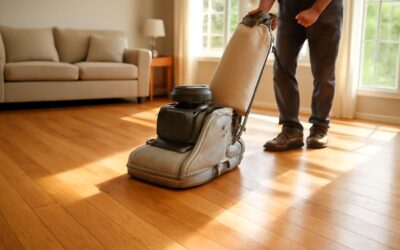
When it comes to adding natural beauty and warmth to a room, nothing beats the look of real wooden flooring. It also increases the resale value of your home, so it’s definitely an investment worth making. Wooden floors come in a variety of species, widths and stain colors, so you’re sure to find the perfect option for your space and style.
Wooden flooring can enhance the aesthetic of any space – from rustic wide planks to more traditional narrow strips. They’re available in both engineered and solid wood, with a wide range of thicknesses and grain patterns. They can be stained or painted to match your décor, or left as they are for a more organic feel. Wooden floors are also eco-friendly and a great alternative to synthetic carpeting, which can be toxic for children and pets.
There are many different types of wood to choose from, but some of the most popular include oak, maple and cherry. Oak is a good choice for high traffic areas as it can withstand a lot of wear and tear. It also looks fantastic with most design styles, from coastal-contemporary to classic colonial. Maple is lighter in color and can be stained to achieve a variety of looks. It’s a good choice for light-colored cabinetry or for pairing with warm wood furnishings like brass etageres and trailing houseplants. Cherry is a darker hardwood and can look beautiful with both traditional and modern designs. It can be stained to achieve a variety of colors, but it’s not as durable as hickory and may need more upkeep than other species.
The durability of a wood floor depends on the species and the construction process. Choosing a hard species like oak, maple or hickory is more durable than softer woods. Hickory is particularly strong and has dramatic grain patterns, which can hide scratches well. It’s a heavier and costlier hardwood than oak or maple, though, and it can be difficult to install in a large space because of its density.
Softer hardwoods like pine, ash and birch are less durable than hickory, but they’re often cheaper. They’re still tough enough for most homes, but they’re more likely to show signs of damage and wear. Choosing a solid-wood floor can be more expensive than an engineered wood floor, but it’s worth the extra investment because of the superior quality and longevity. Solid-wood floors can be pre-finished before installation, which makes the process much quicker, or they can be finished on site by a flooring expert. The finish can be matte, semi-gloss or glossy. The sheen level you choose will determine how much light reflects off the surface of your floor. The higher the gloss, the more reflected light you’ll get. If you’re looking for a more subtle shine, you might opt for a matte or satin finish. You can also select whether you want your floor to have beveled edges or not.


0 Comments